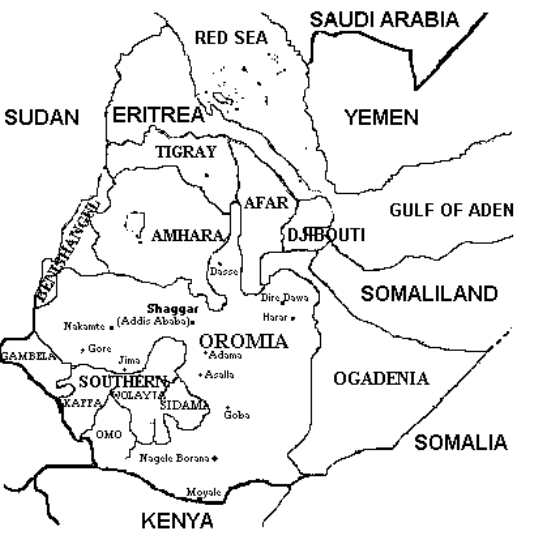
| The Spatial Imagination of Oromia: The Ethiopian State and Oromo Transnational Politics. (Bas van Heur) |
| home | list theses | contence | previous | next |
The writing of this thesis has been, above all, a disciplinary struggle. Although trained as a historian, my interest in political science, anthropology and that area of contemporary cultural theory in which the various participants devote themselves to questions of representation has caused major insecurities concerning the kind of reader I ought to address. Arguments that seemed to make sense, for example, within the discipline of political science often occurred meaningless if seen as part of the historical enterprise. In that respect, my recent interest in and application of geographical theory did not simplify matters.
A number of people deserve special mention for their support in various ways. I want to thank Thomas Zitelmann not only for providing me with literature on Oromo ethno-nationalism, but above all for a number of short talks that made it easier for me to grasp the complexity of Oromo politics. These talks and his own critical writings have been formative on the writing of this thesis. Thanks also to Achim von Oppen for criticizing preliminary versions and for structuring my enthusiastic but often fragmented thoughts during discussions. I also owe a debt to: Andre Bank for his general encouragement and the reading of a number of drafts; Rosemarie Buikema for introducing me to African studies through seminars on South Africa; and my parents for making my studies possible. Above all, I thank Birgit Bertram for putting up with my many moods during the writing of this thesis.
In Ethiopia, surnames are not used in the same way as they are in English. The second name is not a family name, but the first name of the father. It is for this reason that Ethiopian names are usually not inverted in references and in the bibliography. Thus, for example, “Mohammed Hassen” is referenced under “Mohammed” rather than under “Hassen.” However, because many Ethiopian authors have adopted a Western style of referencing their own names and because this Masters thesis is addressed to a general audience not versed in these Ethiopian specificities, I will apply this Western style to all names.
For similar reasons, I have decided to use the singular form of Amharic and Oromo words also for the plural. Otherwise, readers might not recognize that, for example, “woredawotch” is only the plural of “woreda” and not a different word.
Illustration 1: The Regions and Zones in the Federal Democratic Republic of Ethiopia (FDRE) (Source: ReliefWeb)
Click to enlarge
Illustration 2: The OLF’s Spatial Imagination of Oromia (Source: Oromia Online)

| home | list theses | contence | previous | next |